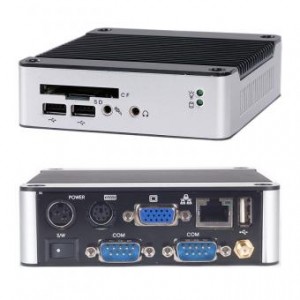 If you have been doing something one way for so long, you might not see the alternatives.
If you have been doing something one way for so long, you might not see the alternatives.
Recently, we learned one of our clients was investigating a newer fanless Linux computer for their printing product. Llamawerx developed the software as well as embedded webpages for the current version. The new hardware promises to be faster, have more memory, more cache, etc., etc.
An embedded web server hosts an application designed to upgrade the translation software and manage certain parameters on the box. Since the unit operates with a read-only file system, operations remount the file system read-write, update the files, and return it to read-only. Usually, an automatic reboot takes place too. An internal speaker on the older hardware beeps when the system resets. The newer hardware reduces costs by eliminating the speaker. According to our client, this poses a problem because the customer won’t know when the system completes rebooting, and they may power-cycle the machine while the file-system is an unstable state.
Being technically astute, our client started designing a solution that would add either a speaker or an LED indicator. When we found this out, we felt there had to be a better way. Yes, his solution would replicate the original platform and would work great on a test bench, but these units will be spread around the facility out of earshot. Since I developed the web application, I suggested modifying it to add an on-screen indicator. Using Javascript, the webpage could retry connections to the web server and detect when the reboot was complete. This seems much simpler than designing an external circuit and it will work with units connected with Ethernet in other buildings.
Our client agreed, “Using a refresh of the webtools would be an excellent way to monitor the status of the box during reset conditions.” Sometimes we’re blindsided by the obvious. At Llamawerx, it’s our job to show you the alternatives.